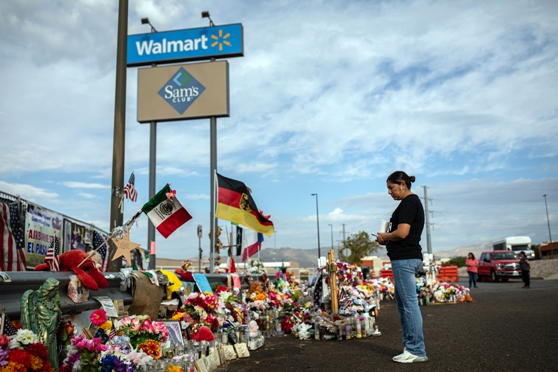Hate crimes in US rose to highest level in more than a decade in 2019

By Tim Arango
WASHINGTON – Hate crimes in the United States rose to their highest level in more than a decade last year, while more murders motivated by hate were recorded than ever before, the FBI said Monday (16)
The sharp rise in homicides driven by hatred — there were 51 last year, according to the FBI — was attributed in large part to the mass shooting in El Paso, Texas, in August 2019. In that shooting, the authorities say a 21-year old gunman motivated by hatred toward Latinos stormed a Walmart and killed 23 people and injured many more.
The death toll in the El Paso attack more than doubled that of 2018’s deadliest hate-motivated crime, the mass shooting targeting Jews at the Tree of Life synagogue in Pittsburgh.
Overall, the FBI collected data on 7,314 criminal incidents motivated by bias toward race or ethnicity or gender identity in 2019. It was the third straight year the metric surpassed 7,100 incidents, and it was the highest number since the FBI reported 7,783 incidents in 2008.
Experts say the FBI data likely undercounts the number of hate crimes in the US, both because many victims fail to report incidents and local agencies are not required to report hate crime data to the FBI.
For example, last year only 2,172 agencies reported hate crime data to the FBI, out of a total of more than 15,000 law enforcement agencies around the country, according to the FBI’s report. (Notable omissions from the data in recent years have included the death of a protester in 2017 during a rally of white supremacists in Charlottesville, Virginia.)
“It’s important to note that, because of the nature of hate crime reporting, the FBI’s annual report vastly understates the real level of hate crimes in the country,” the Southern Poverty Law Centre, which tracks hate groups, said Monday.
The SPLC noted that the rise in hate crimes in recent years has come as the number of white supremacy groups has surged. According to data collected by the centre, the number of white nationalist groups grew 55% between 2017 and 2019.
The upswing in hate crimes last year underscored the upward trend in bias-motivated crimes during the Trump era, and the harsh rhetoric against Latino immigrants was seen as motivating the gunman in the El Paso shooting.
“Politics plays a role,” said Brian Levin, a professor at California State University, San Bernardino and the director of the university’s Centre for the Study of Hate and Extremism.
“The president’s rhetoric has been identified in a series of actual attacks,” Levin added, “but moreover the day-by-day ticks of FBI hate crimes shows there are increases after sustained and fervent remarks by the president that enter into an online feedback loop that also ends up in other discourses, both at the water cooler and on television.”
The overall increase was fuelled by a rise in attacks, in particular, against Hispanics and Jews. The FBI reported 953 anti-Semitic hate crimes last year, a 14% increase from the previous year and the most since 2008, according to a report by CSUSB that analyzed the latest FBI report and was published Monday.
Hate crimes directed at Latinos rose almost 9%, to 527 incidents last year from 485 incidents in 2018. At the same time, hate crimes against Black people fell to the lowest portion of all hate crimes since such data started to be collected by the FBI, although Black people were still far overrepresented in the statistics, according to Levin’s report. Last year, hate crimes targeting Black people fell slightly, by less than 1%.
“Blacks are still the No. 1 target, at twice the level they represent in the American population,” the report said.
In examining preliminary data from 2020, Levin found overall declines in hate crimes, which he explained as a result of social distancing measures and business closures from the coronavirus pandemic, except in three cities: Los Angeles, Houston and San Antonio. And he has also found increases in bias crimes this year against two groups in particular, transgender people and Asian Americans; the latter, he said, was most likely affected by anti-Asian animus provoked by false claims about the pandemic.
-New York Times

